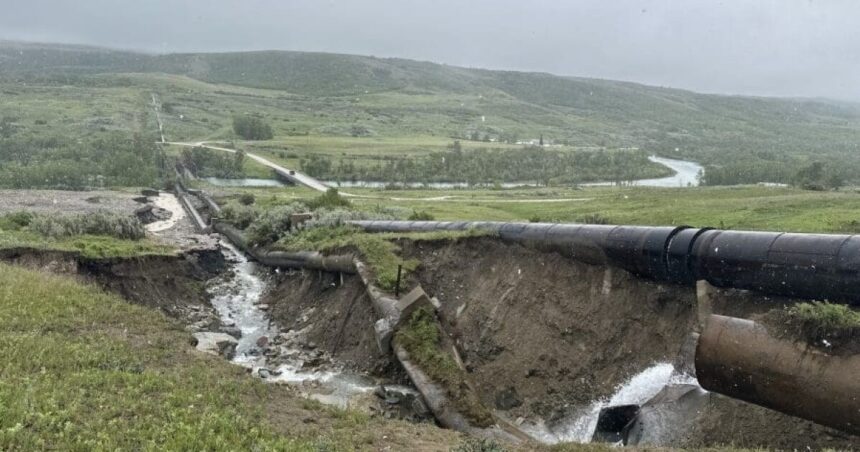The Blackfeet Tribe and the U.S. Bureau of Reclamation are collaborating to address the consequences of the recent St. Mary Canal siphon failures, as announced by tribal officials on Tuesday.
On June 17, a section of the St. Mary Canal siphon ruptured, causing localized flooding in Babb, located in the northern part of the Blackfeet Reservation.
The canal is a crucial component of the Milk River Irrigation Project, which connects the St. Mary River basin to the Milk River, providing irrigation water to 121,000 acres of land in Canada and along Montana’s Hi-Line.
The aging siphon pipes, installed in 1915, were cited as the cause of the failure by Bureau of Reclamation project manager Steve Darlinton. Lack of funding for replacement over the years exacerbated the issue, as reported by the Montana Free Press.
“It really had pretty minimal changes since construction. We’ve added a couple of expansion joints due to landslides, but it’s never failed, not like this,” Darlinton stated. “So it’s all original construction, original steel, original rivets. It’s 110 years old, essentially, and it’s been starting to show its age more and more.”
Bureau of Reclamation personnel have closed off the diversion from the St. Mary River, halting flow to the siphon system. It is estimated to take over eight hours to completely drain. As of noon on June 18, water spilling from the siphons has slowed but not stopped.
Individuals like Blackfeet member Bill Powell, who owns Hook’s Hideaway bar, rodeo arena, and motel in close proximity to the siphon failures, have been significantly impacted. The flooding rendered the main road to his businesses impassable due to debris buildup, resulting in property damage and electricity loss.
The failure has also affected irrigation systems and tribal aquatic lands, with sediment flowing into the St. Mary River below the canal failure site, disrupting aquatic life habitat and downstream agriculture users.
Environmental coordinator David Spotted Eagle Jr. of the Blackfeet Office emphasized the need for collaboration between the tribe and the Bureau of Reclamation for cleanup and restoration efforts to proceed, requiring an Aquatic Lands Protection permit from the tribe’s environmental program.
RELATED:
Drone video captures scene at St. Mary Canal siphon failure
Siphon at St. Mary Canal suffers ‘catastrophic failure’





